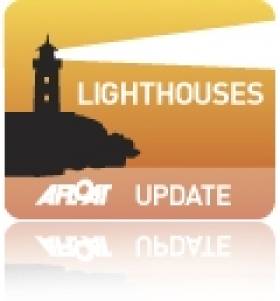Displaying items by tag: Plassy wreck
New LED Light on Inisheer and Exhibition of Old Plassy Wreck
#PlassyWreckExhibition- As previously reported on Afloat.ie, Inisheer Lighthouse on the easternmost of the Aran Islands, was installed with a new light emitting diode (LED) light by the Commissioners of Irish Lights (CIL) last month.
The Iighthouse is a highly important Aid to Navigation (AtoN) as this safeguards the considerable traffic between Inisheer and Co. Clare. It also marks the south-eastern end of the Aran Islands and the western side of the southern approach route to Galway Bay.
It stands 34 metres and this is to ensure visibility of the light due to the low-lying nature of the Island. A red sector of the light delineates the potential danger of Finnis Rock lying to the east.
As previously reported on Afloat.ie, it was during a passage of the Plassy, a Limerick Steamship Co. owned general cargoship which ran aground in a severe storm off Finnis Rock in 1960.
The wreck of the vessel is of TV 'Father Ted' fame, having featured in the opening credits and is the theme for an exhibition 'Art of Rust – From Rust to Art' which this afternoon opens (from 5pm till 7pm) in the National Maritime Museum of Ireland (NMMI) Dun Laoghaire.
Father Ted's Ship: An Exhibition From Art to Rust
#FatherTedShip – To those shipping historians the wreck of the Plassy on Inisheer can be traced to her owners, the Limerick Steamship Company, while to many she is more familiar with her featuring in the opening credits of Father Ted.
What is not deniable between fact and fiction is the passage of time reflected on this shipwreck. The exhibition 'Art of Rust – From Rust to Art' opens in the National Maritime Museum of Ireland (NMMI) next Thursday on 12 June.
The museum invites you to the launch of the event between 5 to 7pm where you can discover new photos by Loïc Couzineau of the wreck of the Plassy. The show which runs to 17 August, unveil its mysteries and secrets of an amazing world full of surprises. For further details in general visit www.mariner.ie
So how did the Plassy get to be where she has been since 1960, with her back broken across grey boulders on the easternmost island of the Aran Islands.
It was during a passage through Galway Bay and a mixed cargo of stained glass, yarn and whiskey, when she was caught is a severe storm. The atrocious weather on 8 March led to her grounding onto Finnis Rock on the east side of the island.
All her crew were rescued from the stricken vessel by islanders using a breeches-buoy.






























































